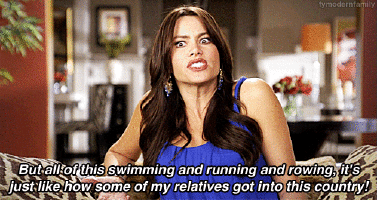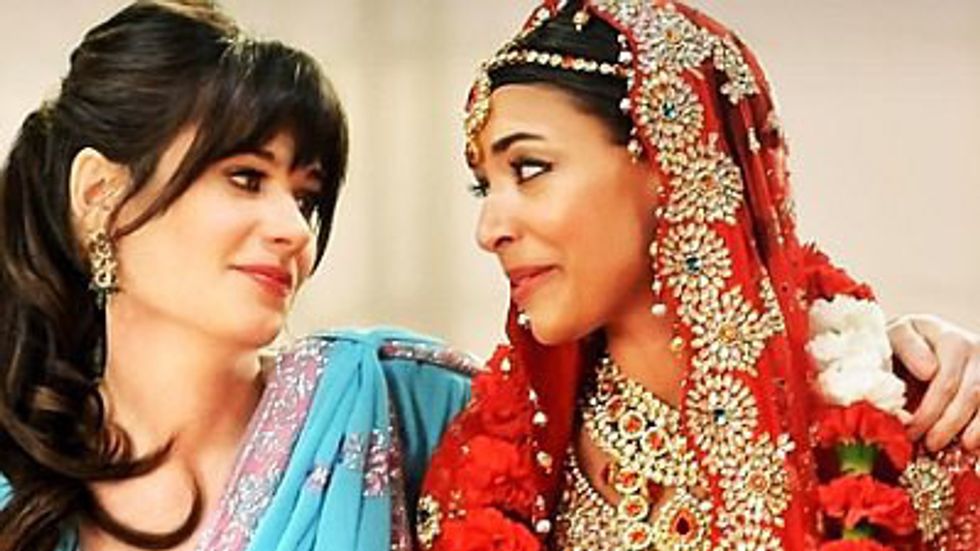Authors and script-writers have recently come to the realization that it is okay to include characters who are not white in movies, TV shows, and books (they still haven't realized that we can be included in the Oscars, but that's another story). As more and more minorities are being included in mainstream media, the ways that they are treated emerge into noticeable trends.
Informed Minority
One of the early tropes to be solidified in the history of Not White/Straight/Christian Characters Finally Getting Media Representation was the Informed Minority. It arises when an author makes an effort to include a minority character, but falls short of exploring how their culture could influence them. Instead, they resort to dropping one reference, congratulating themselves for writing a not-entirely-homogeneous-cast, and forgetting the issue entirely.
"Paper Towns," a novel by John Green that was adapted into a movie last summer, has a perfect example. Margo Roth Spiegelman, one of the main characters, mentions using money from her bat mitzvah to pay for something, alerting us all that she's Jewish. After that, it's never mentioned again. There's nothing about Shabbat or keeping kosher. There's not even light-hearted references to the fact that she (like a lot of Jews) obviously doesn't observe these traditions. We've been informed of her Judaism, but god forbid that it actually affect her character in any way. Including an Informed Jew (or an Informed Latino, etc.) is like an author hoping for an A for effort. They can do better and they should.
"See how my last name is Spiegelman, Quentin? That lets people know that I'm Jewish, even if it never gets mentioned again. That's clever, right?"
Stereotype Overload
In a sense, Stereotype Overloading is the opposite of Informed Minority. Now that the author has made the decision to include a minority character, they are going to do everything that they can to emphasize it. They are going to haul out every single stereotype that they know about a certain ethnicity until they are practically screaming at the audience.
While certainly well-intentioned, it usually results in the unfortunate perpetuation of stereotypes. The more that people see these generalizations, after all, the more that they are likely to believe that they are true. Sofia Vergara's character on "Modern Family," Gloria, exemplifies this trope. It's as though the writers googled "Latina woman stereotypes" and wrote down everything that they could find: "curvy," "spicy," "feisty," "loud," "argumentative." The actress was even asked to dye her naturally blonde hair black for the first season so that she'd better fit the "image" of a Latina woman. Acknowledging that someone's culture or ethnicity impacts their day-to-day life is a step in the right direction, but, as media consumers, we can still demand more.
Do you get it? It's because she's Colombian and all Colombian people are poor illegal immigrants!
Writing Diverse Characters
The key to writing a diverse character is to let their background shade their personality without it completely overtaking it. The main character on the TV show "Scandal," Olivia Pope, is black. It is a part of her identity and she talks about it in moments during the show. When an unarmed black teenager is shot by a cop, for example, or when she discusses the future of the Republican Party, it is clear that she is not an Informed Black Woman, she is an actual black woman. At the same time, that is not what defines her character. The show doesn't fall into dumb jokes about how she likes fried chicken. It develops her as a whip-smart and hyper-competent anti-heroine who happens to be black.
Teach me how to power walk like you do, Olivia.
The TV show "New Girl" also excels in this. Cece Parekh is Indian and not an Informed Indian. A plotline revolves around her pursuing an arranged marriage (common in Indian cultures) because she thinks that it will be a way for her to be happy. All of the wedding preparations are familiar to people who are Indian (or who are lucky enough to have attended an Indian wedding) and she even said a few lines in Hindi. She's also an ex-model who goes to community college and who has an off-again-on-again relationship that's at the forefront of the show (with a character who happens to be Jewish, by the way, although that's not his defining characteristic either). She's a real, developed character with a real, developed ethnicity. Just like, you know, real human beings.
Cece on her wedding day is #goals.
Writing diverse characters can be tricky, especially when you write outside of your own race and experiences. However, as Gene Luen Yang pointed out in a brilliant speech at the 2014 National Book Festival, it's better to try and step outside of your comfort zone and not completely succeed than to continue building a white bread world.

























